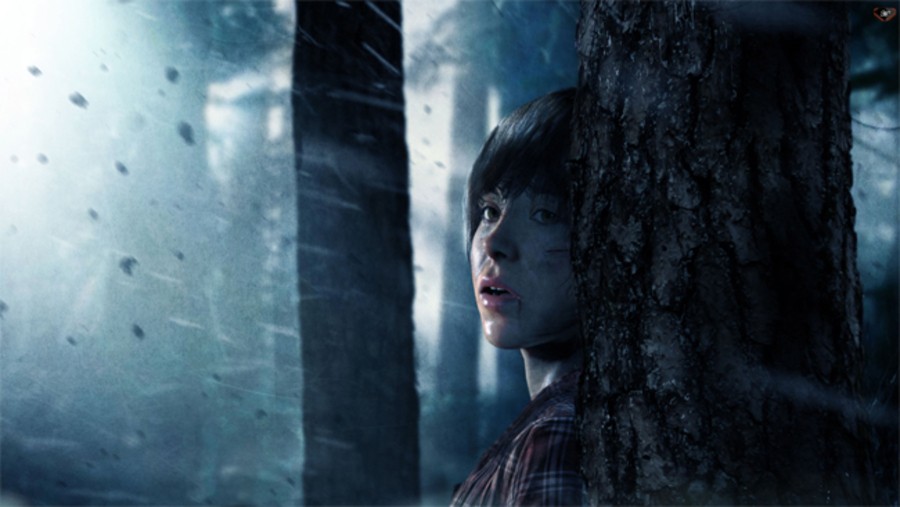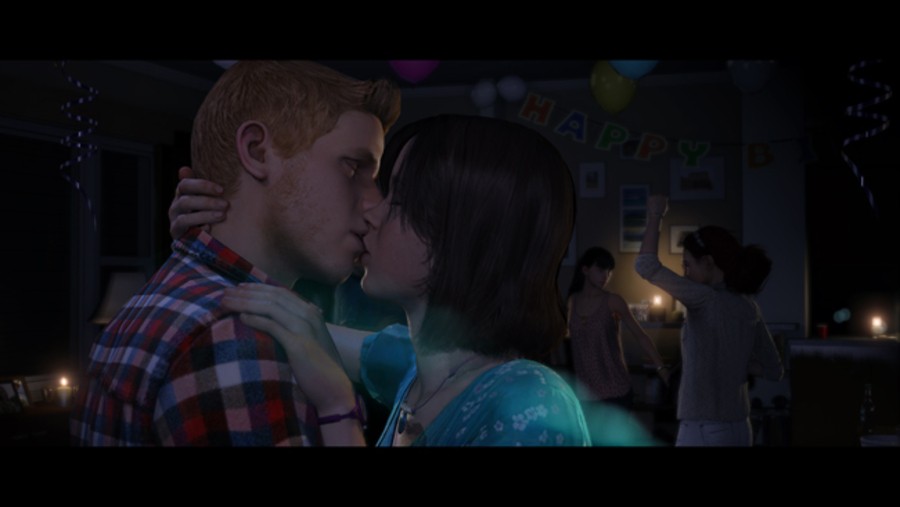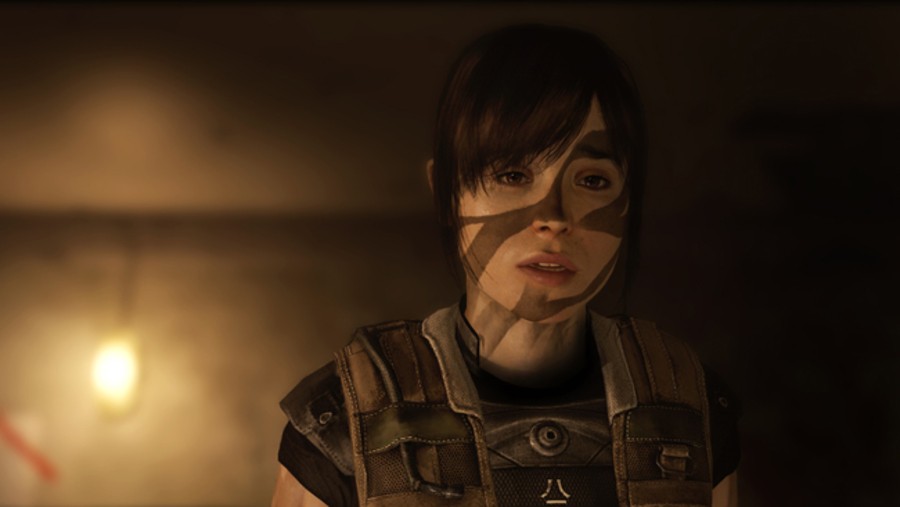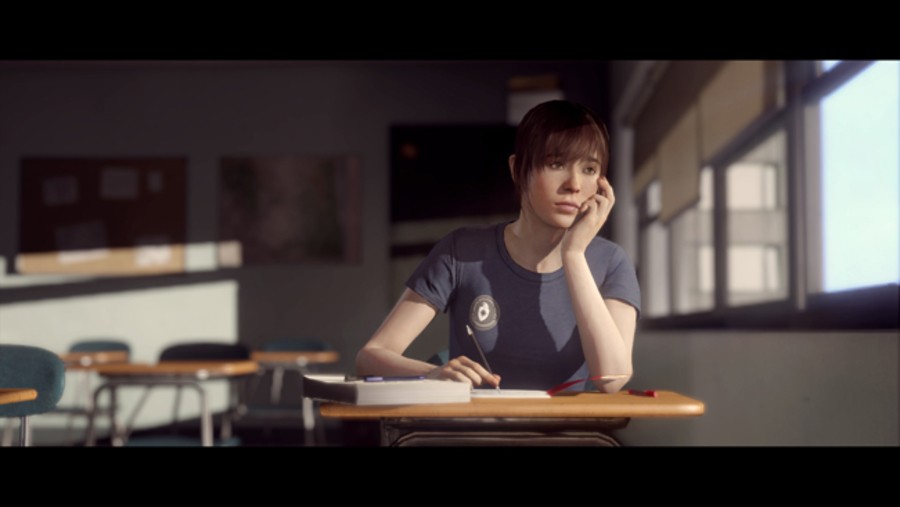
Beyond: Two Souls is unlike anything that you’ve ever played before. It certainly shares similarities with developer Quantic Dream’s previous work, but many of those comparisons revolve around the fact that you’ll be interacting with the game world in an unorthodox way. Much like there was an entire sequence in Heavy Rain dedicated to attending to the needs of your depressed son, the opening hours of the Parisian outfit’s latest PlayStation 3 exclusive are packed with unexpected, intentionally mundane moments. It’s certainly not going to win over the studio’s staunchest critics – but we’re not entirely convinced that the company cares.
There’s one scene near to the start of the release that sees protagonist Jodie Holmes escorted by her doctor Nathan Dawkins to a birthday party. The adolescent, who’s under surveillance due to her troubled relationship with a mysterious entity named Aiden, has been given the afternoon away from the psychiatric hospital in which she typically resides. Understandably nervous, she’s hesitant to attend the social gathering, which inevitably escalates from a serene suburban celebration to a typical teenage shindig. Awkwardly, you’re forced to socialise with your new acquaintances, take control of the stereo, and engage in a spot of underage drinking. It’s all very real.

Divisive director David Cage’s games have always been good at forcing you to relate with its cast, but the recruitment of recognised performers makes all of the difference here. Ellen Page is impressive as the misunderstood heroine, often relaying information through her body language and facial expressions. She avoids eye contact with her peers, communicates in a reserved and self-conscious manner, and generally gives the impression of someone out of her depth. You have choices, of course – most notably when one of the attendees at the anniversary bash attempts to woo you into a clinch. Your decisions ultimately affect the way that the scene plays out.
Unlike the ambitious developer’s previous release, though, there’s a secondary sci-fi narrative at play here. You’re constantly accompanied by a spirit, a tethered other that is responsible for your ongoing observation. When the celebration turns sour due to the other partygoers taking a dislike to your gift, you can choose to wreak havoc on them through your binded companion. Pressing the triangle button allows you to assume the role of Aiden, where you can essentially float through walls and interact with marked objects from a first-person perspective. We’ll tiptoe around the events leading up to the optional violent vengeance, but it’s a testament to the game’s writing and characterisation that we felt inclined to cause as much damage as possible. A job well done, we’re sure that the studio would say.

Alas, the birthday party was just one of the sequences that we got to play. The campaign is separated into key moments from Jodie’s life, which range from her early childhood right through to her later years. It hops around a little awkwardly, but gradually fills in the gaps while simultaneously fleshing out the gameplay mechanics. In a sequence that’s designed to teach you how to control your invisible companion, you play as the protagonist during her younger years, observing cards being selected by a chubby volunteer in another room. Things quickly get out of control as you terrify the innocent lady, using Aiden to knock over water bottles, bricks, and security cameras. To interact as the entity, you must hold the L1 trigger, and then pull the analogue sticks in different directions to charge up your force.
But the spirit’s purpose is not simply to break things. Jodie shares a love-hate relationship with the mysterious being, and despite being the cause of her sorrow, he is often her saviour, too. This is particularly prominent in combat, when the protagonist is recruited by the military. A training sequence sees you luring guards using the spirit, and then taking them out as the heroine. It’s fairly linear in this instance, but a later scene that sees the star chased by a wealth of government agents shows how the story can branch. Unable to deter our pursuers for long enough, we were captured and carted off by the cops, only to later possess one of the guards accompanying us and prompt him to assassinate the vehicle’s pilot. The perfect escape, no doubt – but that scene wouldn’t have even occurred if we’d have successfully eluded the law earlier.

There are limitations. For obvious reasons, you can’t access Aiden at all times. Furthermore, there are only certain things that you can interact with. As a result, the game funnels you down the path that it more or less wants you to take, but it does a good job of disguising this and making you feel like you’re in control. It’s a little bit jarring when the spirit moves freely through some walls and not others, but it’s no less bizarre than the fact that you can’t enter 95 per cent of the buildings in Grand Theft Auto IV.
That the developer’s focused on a select few environments, though, means that they all feel very authentic. Jodie’s bedroom in the psychiatric facility has toys, clothes, a guitar, and a television playing a cartoon, which you can actually sit and watch if you want to. Interactions have been tweaked slightly since Heavy Rain; instead of button-matching, you now push the right stick in the direction of a highlighted object. It feels odd at first, but it quickly establishes itself as second nature. The floating mind maps do appear when you need to make a decision, but they’re less prominent this time around. Actions sequences – such as a fight on top of a train – do away with QTEs, too, opting for a slightly more skilful mechanic in which you must follow through with the momentum of the protagonist’s movements. They’re still simple sequences in essence, but require you to actually think about what you’re doing rather than simply tap corresponding buttons.

And how are the visuals? The entire game plays in 16:9, giving it a filmic quality – and it could pass as a genuine movie at a glance. There are some rough textures and aliasing issues here and there, but the fact that the game’s running on a PS3 is genuinely astounding. Minor lip synching issues aside, the facial animations rival L.A. Noire, but what’s most impressive is that it marries the realistic expressions with believable performance capture, too. While fellow first-party developer Naughty Dog prefers to custom animate the faces of its characters to excellent albeit exaggerated effect, there’s something much more subtle about Quantic Dream’s take that really adds an air of believability to the proceedings. It’s not always perfect – an awkward motion stands out much more here than in any other release – but it’s still light years ahead of everything else.
The title’s shaping up nicely, then. It’s a much slower and more deliberate affair than is customary for the industry, and that’s going to make it just as divisive as its predecessor. But while both Fahrenheit and Heavy Rain had clear presentational flaws, those issues appear to have been eroded in Beyond: Two Souls. Traditionalists will still take issue with the simplistic gameplay, but this is clearly not a title concerned with catering to the tastes of score chasers and the like. This is an adventure that wants you to feel a nebulous connection to its characters, much like the link that tethers Jodie to her unwanted ally Aiden. And in that respect, we have little reason to doubt that this is going to be anything other than a resounding success.
Are you eagerly anticipating Beyond: Two Souls? Would you like to see more titles take a narrative heavy approach? Let us know in the comments section below.





Comments 12
GTA is going to make the wait for this so much easier.
@Splat Sadly we have to wait until October 1 to play GTA MP
Excellent preview, Sammy. Adored Heavy Rain (flaws and all) and this is looking to be just as, if not more, brilliant.
@Splat Agree. Can't wait for this, but GTA will help.
Yep, loved Heavy Rain so damn much...and looking insanely forward to this, but I'm with the group in saying that GTA 5 takes the sting off the wait.
This looks and sounds absolutely fantastic. Story-fueled games have always enticed me, and I would love to see more games focus on narrative at times, as long as gameplay is not completely forgotten.
God, this looks so freakin' good
Gimme has it
Im way excited for this game. It saddens me that no one ever mentions Indigo Prophecy when talking about Quatic Dreams previous titles though.... That was an amazing game. One of the best PS2 had to offer
Can't wait to EXPERIENCE this. Looks awesome.
@RickySpanish Is Indigo Prophecy ever coming to PSN do you know? I really want to play that game.
@tonedef That would be amazing but I wouldnt hold my breath.
Show Comments
Leave A Comment
Hold on there, you need to login to post a comment...